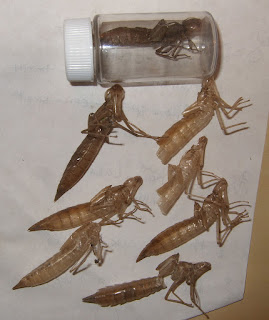We'll finish off the week with one of the beautiful emeralds. This is a Red-fringed or Two-striped Emerald (Nemoria bistriaria, Hodges #7046). Who doesn't love a green moth? Never mind that this species has a brown spring form. BugGuide even has an interesting intermediate form; the scale colors are apparently influenced by pre-emergence temperatures.
 |
| Photo by Darrin O'Brien. All rights reserved. |








